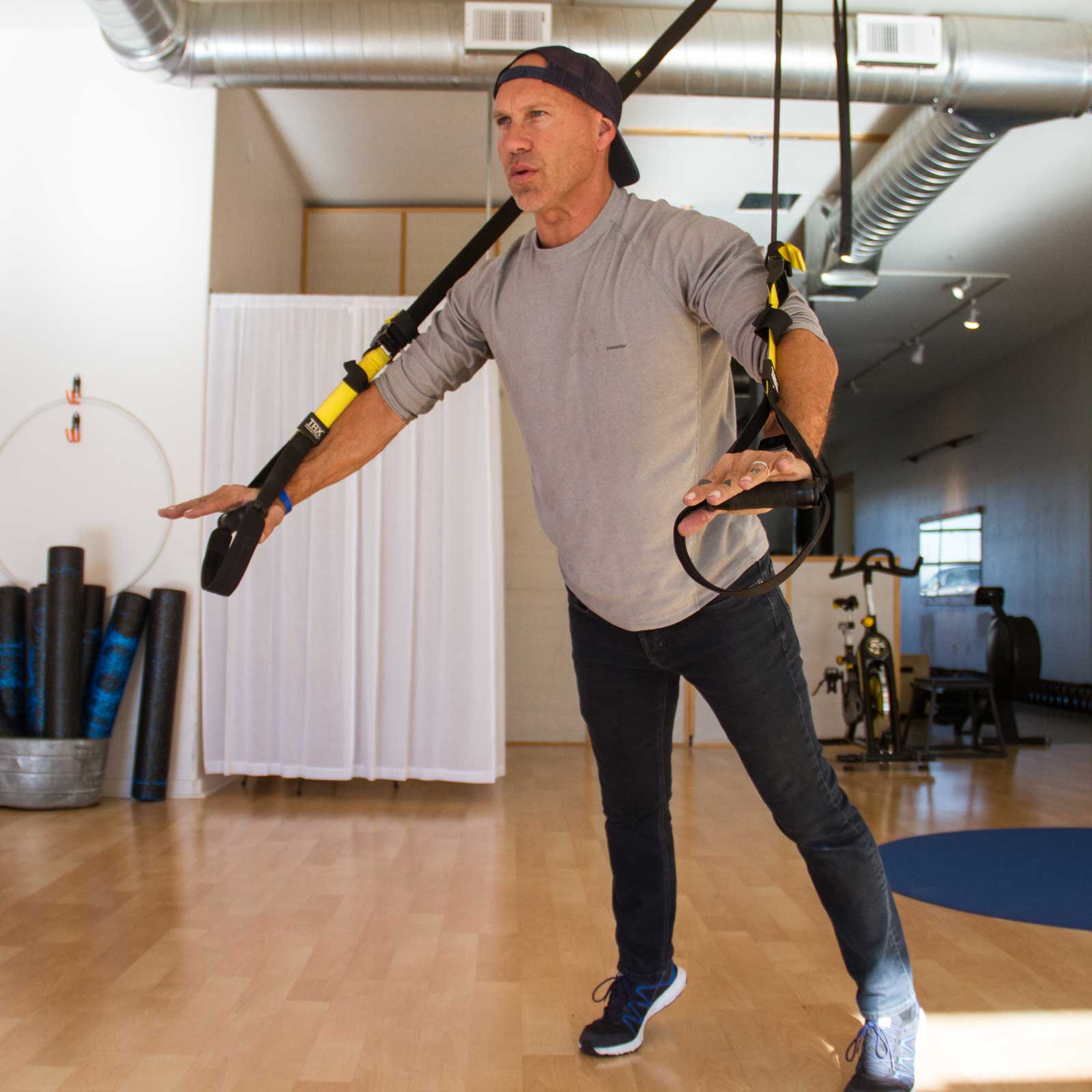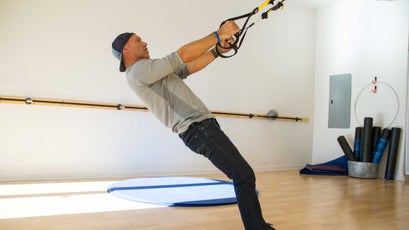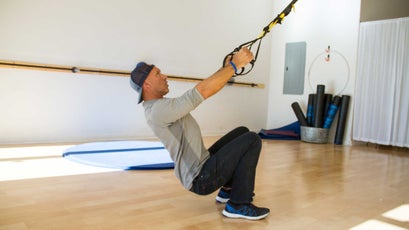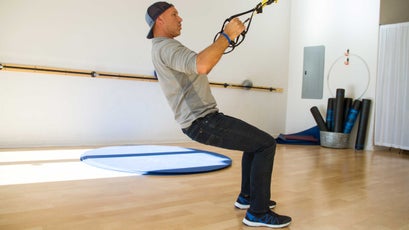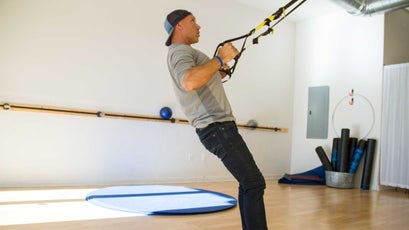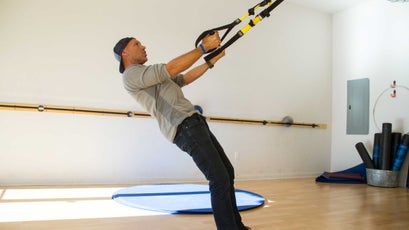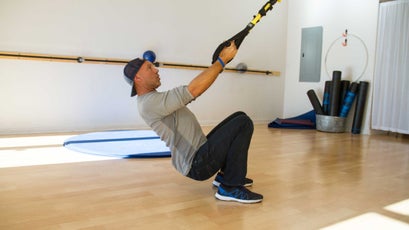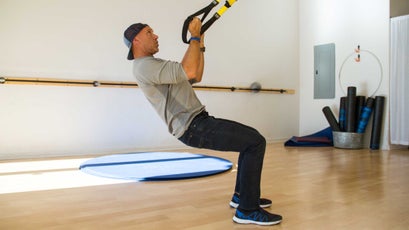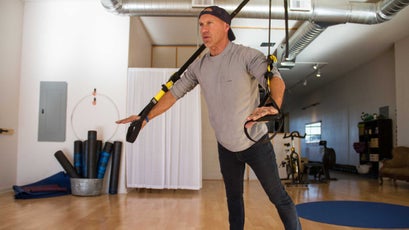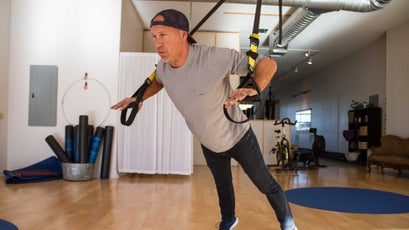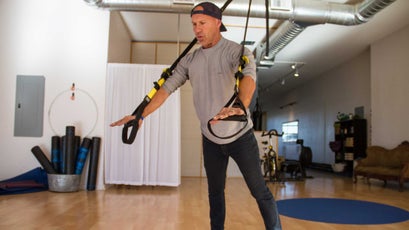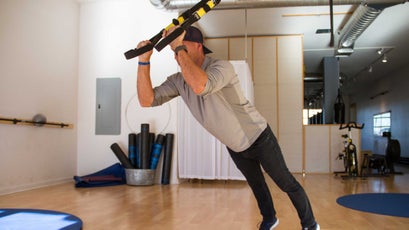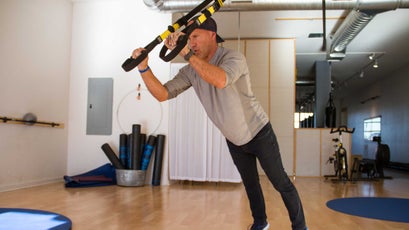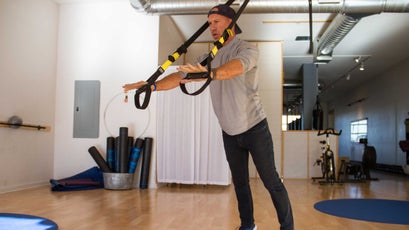TRX bands offer one of the most efficient full-body workouts around, whether you’re new to the gym or a dedicated lifter. “Suspension training with the TRX bands hits every single muscle group that you would on a machine or with free weights, with the plus of having to balance, which uses more of your core and stabilizer muscles,” says Doug Lawder, owner of in Santa Fe, New Mexico, and a TRX-certified trainer. “Even if you lift weights all the time, a TRX workout will feel different and challenging.”
The TRX system is completely customizable to different fitness levels and allows for endless progression. Lawder suggests mixing up sets and repetitions to challenge your muscles in new ways, like creating high-intensity interval circuits with the moves below. However you choose to shape your workout, Lawder emphasizes the importance of maintaining a “power up” position: shoulders pulled back and down, core tight, and spine upright. If your gym isn’t equipped with a TRX system, is simple—all you need is a sturdy doorframe, tree, or crossbar to hang it from. (The most basic at-home system costs around $140.) Here, Lawder takes us through the five exercises he recommends for TRX novices.
Squat Row
What it does: Targets four different muscle groups—the lower body, core, back, and biceps—and adds an element of cardio.
How to do it: Plant your feet shoulder-width apart, keeping your weight in your heels. Grip the handles with your palms facing inward and lean back. Inhale as you bend your knees into a low squat, then exhale while pushing up through your legs and squeezing your core. When you’ve almost reached the top of your squat, pull up with the arms, completing a row.
Squat Biceps Curl
What it does: Uses the same muscle groups as the squat row, with added emphasis on the biceps.
How to do it: Follow the same form as the squat row, except keep your elbows high and your palms facing upward. As you stand up, curl your biceps in, ending with your hands on either side of your ears.
Push-Up
What it does: Builds strength in the chest and triceps, with extra isolation of the abs.
How to do it: Begin in a high plank, keeping your hands slightly wider than shoulder width with the bands in front of your arms. Keep your hands light on the handles to transfer energy from your forearms to your chest. Bend your elbows to a 90-degree angle, lowering your body toward the floor. Push back up through your chest, keeping your core tight and being careful not to collapse in the lower back. Lawder recommends going no lower than 90 degrees to protect the shoulders from injury.
Triceps Extension
What it does: Isolates your triceps while adding strength and stability to the core.
How to do it: Set your feet shoulder-width apart and grip the handles with your knuckles facing toward you. Begin with your hands about chest height, arms outstretched. Slowly bend your elbows and lower your body forward, maintaining a straight back. Exhale as you extend out, engaging your core.
Downward Dog
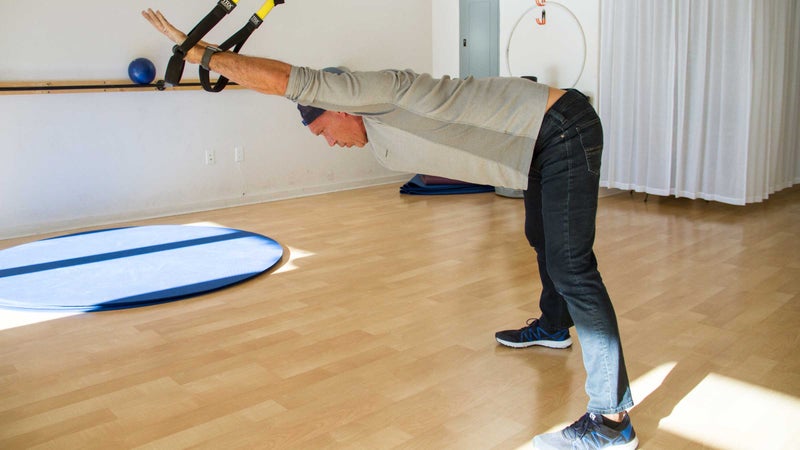
What it does: Improves flexibility in the hamstrings and calves.
How to do it: With your feet wide apart on the floor and a light grip on the handles, slide your hips backward while reaching forward with your hands, elongating the spine. Take a big inhale, then, with an exhale, push your chest toward the floor, keeping your back flat. Remember to stay heavy on your heels and light on the toes to get a deep stretch in the hamstrings.


